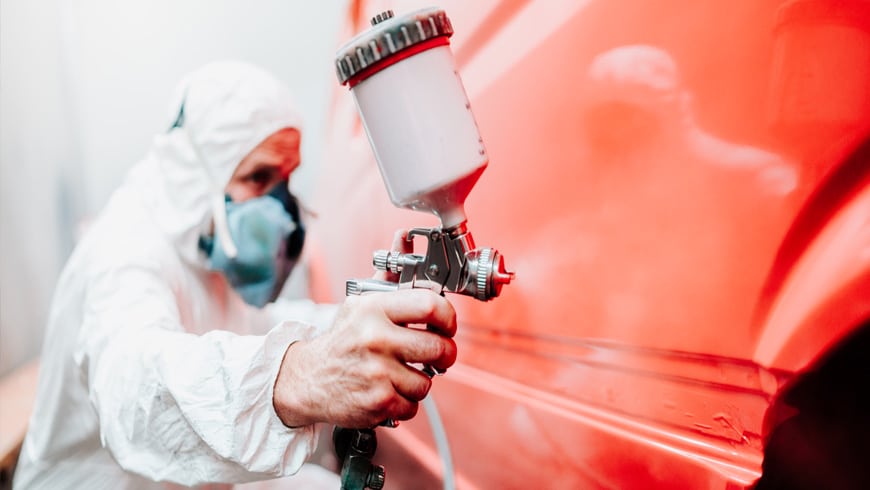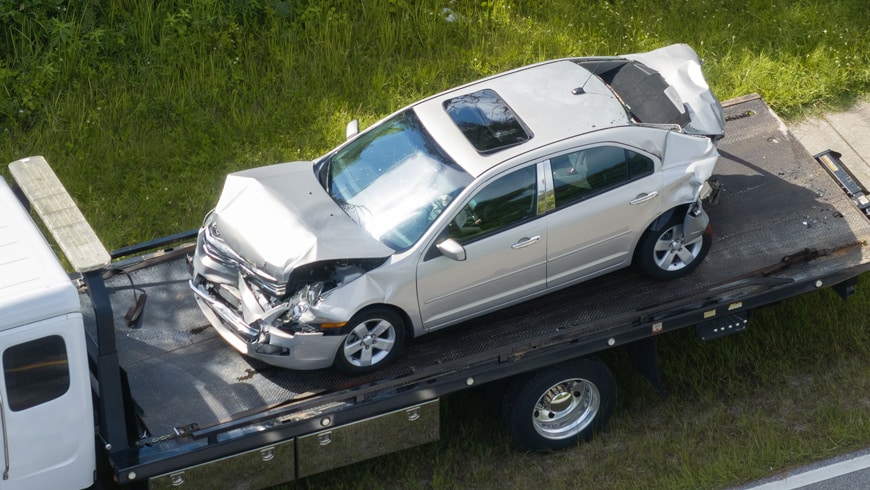You’re driving home from work, and suddenly, another car swerves into your lane. Crash! Your beloved car now has a dented fender and a broken headlight. What’s your next move?
Well, technically your first move is to ensure your safety and the safety of anyone else riding in your car. And once that has been established, you need to collect a lot of important information at the scene of the accident.
But once all that has been completed and you’re left to figure out how to repair your car, these are the steps you need to take to start the process of actually getting those repairs made.
1. Contact Your Insurance Company
The first thing to do is to call your insurer. They’ll guide you through the process and may even have preferred repair shops.
Your policy may have specific language regarding the repair of your vehicle. The ISO auto insurance policy form, which is simply a standard policy form used by many insurers, has this language regarding inspection of the insured vehicle:
“We have the right to inspect and appraise the damaged property before its repair or disposal.”
This means your insurance company has the right to assess the damage before any repairs are made. They might send an adjuster to inspect your car, or they could ask you to get estimates from repair shops.
If you live in a larger city, there is a good chance that your company has a physical location where they may request you take your vehicle for inspection. Now obviously if your vehicle is damaged beyond the point that it’s safe to drive, then an adjuster would need to inspect the car where it was towed after the accident.

2. Choose a Repair Shop
Now comes the tricky part: selecting a repair shop. Should you go with the insurance company’s recommendation? Or that place your uncle swears by?
You actually have the right to choose where you vehicle gets repaired. However, if you pick a shop that charges more than the insurer’s estimate, you might have to pay the difference.
If you use an auto repair shop that is recommended by your insurance company, this can potentially speed up the repair and payment for the damages.
Insurance companies work closely with preferred repair shops and may trust their estimates without a lot of oversight other than a quick review by an adjuster.
If you choose a shop that is not a preferred vendor of your insurance company, there may be delays as the shop and the insurance company resolve differences in the damage estimates.
3. Get Multiple Estimates
You’ve heard the phrase “shop around” when it comes to buying a car or insurance, but did you know it’s equally important when getting it repaired?
Here’s why obtaining multiple estimates is highly recommended:
Price Variations
Repair costs can vary significantly between shops. One might quote $1,500 for your dented fender, while another asks for $2,200.
Why such a difference? It could be due to:
- Labor rates: Some shops charge more per hour than others.
- Parts sourcing: Shops might use OEM (Original Equipment Manufacturer) parts, aftermarket parts, or even used parts, each at different price points.
- Overhead costs: A shop in a prime location might have higher rent, reflecting in their prices.
By getting multiple estimates, you’re more likely to find a fair price that balances quality and cost.
Detailed Damage Assessment
Different mechanics might spot different issues. While one focuses on the visible dent, another might notice potential frame damage.
More estimates mean a more comprehensive understanding of your car’s condition post-accident. If one shop finds additional damage that may have been missed by another, you are then in a good position to request a new estimate.
Negotiating Power
Armed with multiple estimates, you’re in a stronger position to negotiate with your insurance company.
In most cases, you will only be responsible for your deductible amount before repairs are made, so if the cost of repairs is higher at their preferred shop it’s not going to cost you more out-of-pocket.
However, repairs are not just about the best price. Quality also matters (keep reading).
Quality Comparisons
Estimates aren’t just about price as there are a lot of factors that can affect the cost of car repairs. They also detail the repair process, parts used, and warranties offered.
By comparing these factors across estimates, you can make an informed decision about which shop will provide the best overall value and quality of work.
Insurance Requirements
Some insurance policies require multiple estimates. Even if yours doesn’t, providing several options can expedite the approval process. Let’s look at what the ISO form says about this:
“We may require you to provide us with a written proof of loss containing the information we request to settle the claim.”
Multiple estimates can serve as part of this “proof of loss,” demonstrating due diligence on your part.
Detecting Potential Fraud
While rare, some unscrupulous shops might inflate estimates. By getting multiple opinions, you’re more likely to spot any outliers that seem suspiciously high or low.
Understanding Repair Approaches
Different shops might propose different repair methods. One might suggest replacing a panel, while another believes it can be repaired. These varying approaches can affect not only the cost but also the long-term integrity of your vehicle.
Remember, getting multiple estimates doesn’t mean you have to choose the cheapest option. It’s about gathering information to make the best decision for your car and your wallet.
What to Expect During the Estimate
So, you’ve chosen a repair shop. What happens next?
The mechanic will inspect your car thoroughly, checking for both visible and hidden damage. They’ll then provide a detailed estimate, including:
- Parts that need replacement
- Labor costs
- Paint and finishing work
- Estimated time for repairs
But what if additional damage is found during the repair process? Don’t panic. It’s common to discover additional damage once the repair process has begun.
The repair shop and your insurance company will hash out payment for the damage that was overlooked on the initial estimate. This is often simply a phone call between the shop and the adjuster assigned to your claim.
Understanding Your Policy
Let’s take a look at some other policy language that can impact repair estimates and coverage. Again, from the ISO auto policy form:
“Our payment for loss will be the lesser of the:
1. Actual cash value of the stolen or damaged property; or
2. Amount necessary to repair or replace the property with other property of like kind and quality.”
This means your insurer will pay either the car’s value or the repair cost, whichever is less. It’s crucial to understand this because it affects how much you might have to pay out of pocket (beyond your deductible).
If the cost to repair the damage to your car is more than what the car is worth (actual cash value), then your car is considered to be a “total loss” or “totaled”.
In these cases, your car will not be repaired and instead the insurance company will pay you the actual cash value of the vehicle and usually they will take possession of the vehicle. The car is then sold as “salvage” at auction or to a salvage yard where the vehicle is used for parts or scrap metal.
In some cases, you may be able to keep your totaled vehicle. Generally the insurance company will pay you the actual cash value minus the salvage value. You are then free to fix the car yourself, but it will always have a salvaged title, which can result in a lower resale value.

Navigating Disagreements
What if you disagree with the insurance company’s estimate? This is not uncommon. Insurance companies use a variety of methods to determine the cost to repair damages, but they are not perfect and by no means are they exact every time.
And you have options if you think their valuation is too low:
- You can request a re-inspection
- You can provide evidence supporting your estimate
- You can consider mediation or arbitration
Remember, communication is key. Keep all documents and correspondences with your insurer and repair shops. These might come in handy if there’s a dispute.
You insurance company does not intentionally try to low-ball your claim payment, although it may seem like it sometimes.
It’s the adjusters job to find just the right balance between satisfying the insured, paying to get the vehicle repaired, and maintaining the profitability of his or her employer, which is your insurance company.
 During his career as an independent insurance agent,
During his career as an independent insurance agent,